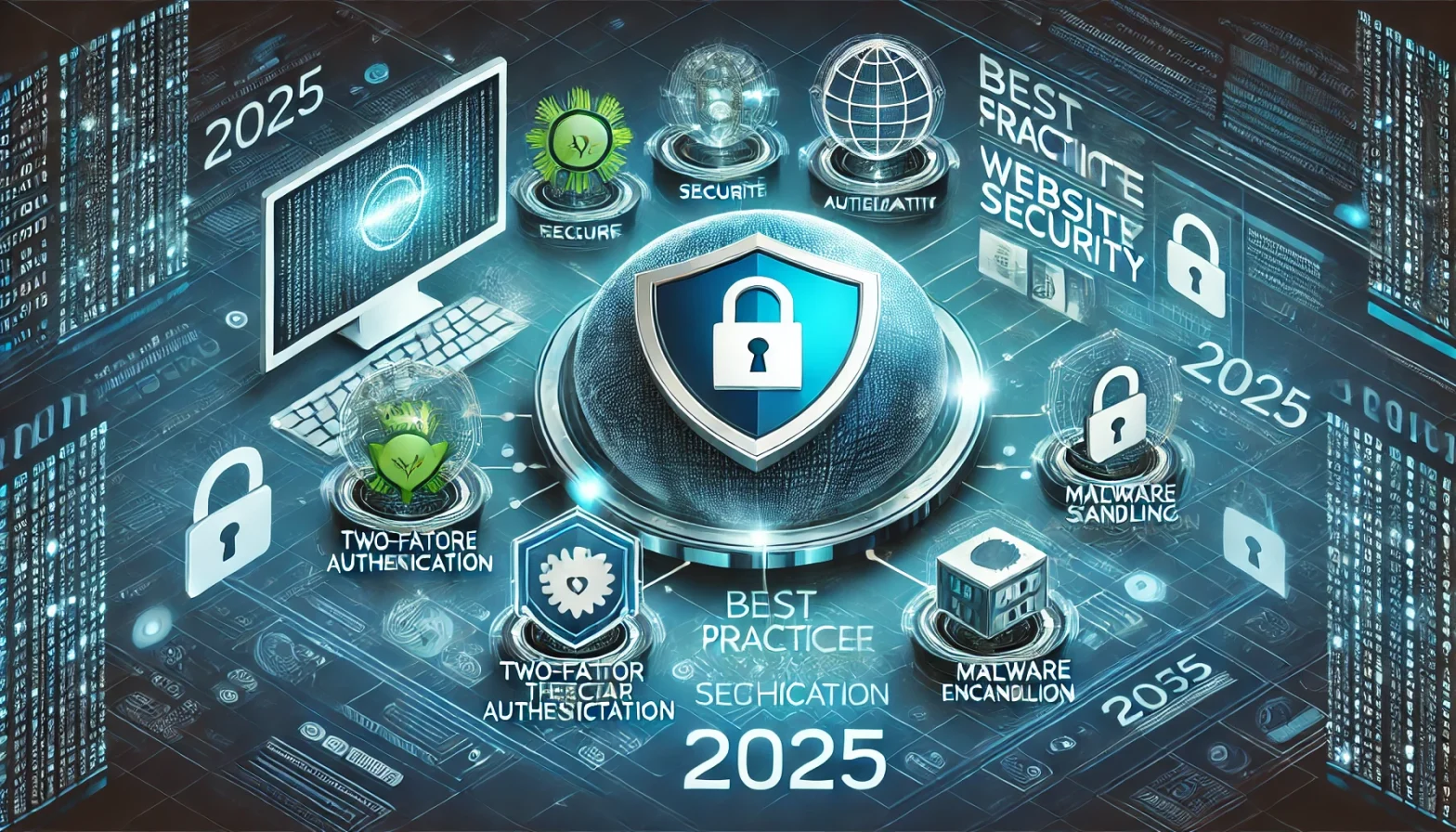As cyber threats continue to evolve, keeping your website secure is more important than ever. Hackers, malware, and data breaches pose significant risks to businesses and individuals alike. Whether you run a personal blog, an eCommerce store, or a corporate website, security should be a top priority. In this article, we outline some of the best practices for website security in 2025, helping you protect your site, your data, and your visitors.
1. Use Strong Passwords and Two-Factor Authentication (2FA)
One of the simplest yet most effective security measures is ensuring that all accounts associated with your website use strong, unique passwords. Avoid using common passwords like password123 and instead opt for a combination of upper and lowercase letters, numbers, and special characters.
Additionally, enabling two-factor authentication (2FA) provides an extra layer of security by requiring a secondary code (e.g., via an authenticator app or SMS) to log in. This helps prevent unauthorised access even if passwords are compromised.
2. Keep Software, Plugins, and Themes Updated
Outdated software is a major security risk. Hackers often exploit vulnerabilities in older versions of website platforms, plugins, and themes. To reduce this risk, make sure to:
- Regularly update your CMS (e.g., WordPress, Joomla, or Drupal).
- Ensure all plugins and themes are up to date.
- Remove unused or abandoned plugins that no longer receive security updates.
3. Install an SSL Certificate
An SSL (Secure Sockets Layer) certificate encrypts the data exchanged between your website and its visitors, ensuring that sensitive information like login credentials and payment details remains secure.
4. Use a Web Application Firewall (WAF)
A Web Application Firewall (WAF) acts as a barrier between your website and potential threats, filtering out malicious traffic before it reaches your server. A good WAF can protect against common cyberattacks such as SQL injection, cross-site scripting (XSS), and DDoS attacks.
5. Regularly Back Up Your Website
Even with strong security measures in place, it’s essential to have a backup plan in case of data loss or a cyberattack. Regularly back up your website to a secure location (e.g., cloud storage or an external server) so you can quickly restore it if needed.
6. Monitor and Scan for Malware
Regular security scans help detect vulnerabilities, malware, or suspicious activity before they cause serious damage. Use security plugins or external services to perform scheduled scans and receive alerts about potential threats.
7. Limit Login Attempts and User Access
Brute force attacks, where hackers attempt to guess login credentials, can be mitigated by limiting the number of login attempts before temporarily locking an account. Additionally, restrict administrative access to only those who truly need it, and assign appropriate user roles with limited privileges.
Final Thoughts
Website security is an ongoing process that requires regular attention and proactive measures. By following these best practices, you can reduce the risk of cyber threats and keep your website safe. If you need secure and reliable hosting with built-in security features, Enbecom offers robust hosting solutions tailored to your needs.

